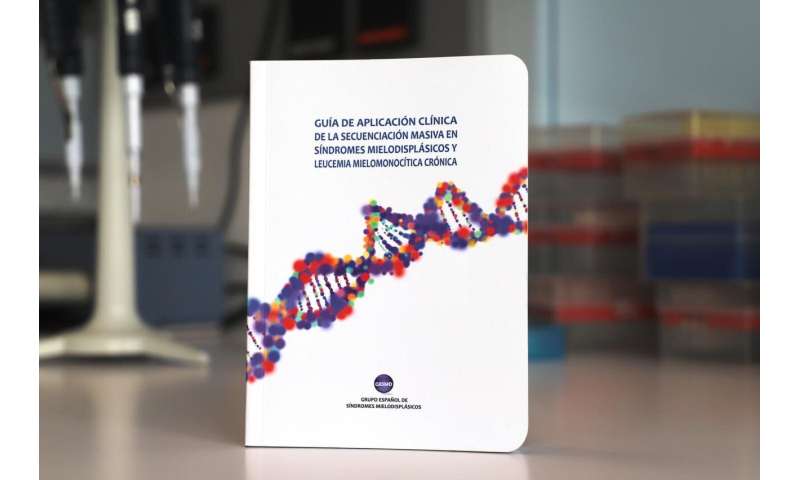A clinical guide for the genomic diagnosis of myelodysplastic syndromes and chronic myelomonocytic leukaemia


In Spain, a workgroup of more than 400 researchers—the Spanish Group of Myelodysplastic Syndromes (GESMD)—meets twice a year to present projects and undertake collaborations that improve their work in the fight against myelodysplastic syndromes (SMD) and chronic myelomonocytic leukaemia (CMML), two types of blood cancers.
Among these projects, this group undertook the development of guidelines to set next generation sequencing (NGS) to improve diagnosis, prognosis and decision making on the treatment of patients with these diseases.
NGS allows sequencing from an entire genome to the parts, such as specific genes, that are involved in a disease. The genome is the entire genetic code—the instructions within a human being to generate the tissues, organs, and functions of the body. We share 99.9% among our fellow humans, while 0.1% is everything that makes us different, from our eyes’ colour to our likelihood of developing cancer.
Researchers from 8 research centres and Spanish hospitals from the GESMD have agreed to guide haematologists on how to study the 40 most relevant genes in the study of MDS and CMML, and to detail the steps to follow for the application of the NGS technique in hospitals and laboratories. The guides include technical aspects, quality controls, what types of samples are needed, how to prepare them, how to analyse and understand the data, and how to explain results in a clinical report for patients in the context of the disease.
The guide was printed as a book in Spanish, with the help of Celgene, and has been recently published in the British Journal of Haematology, to make it available for analysis in other countries.
“This study is important because it gives recommendations on how to apply a technique that generates relevant information at three levels: diagnostic, prognostic, and treatment information,” says Laura Palomo, co-author of the study.
Source: Read Full Article




